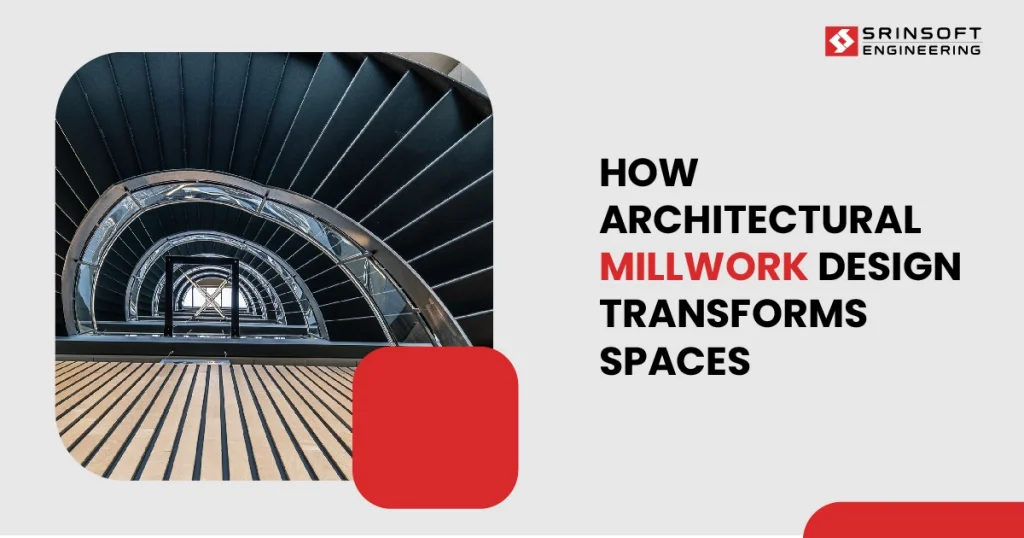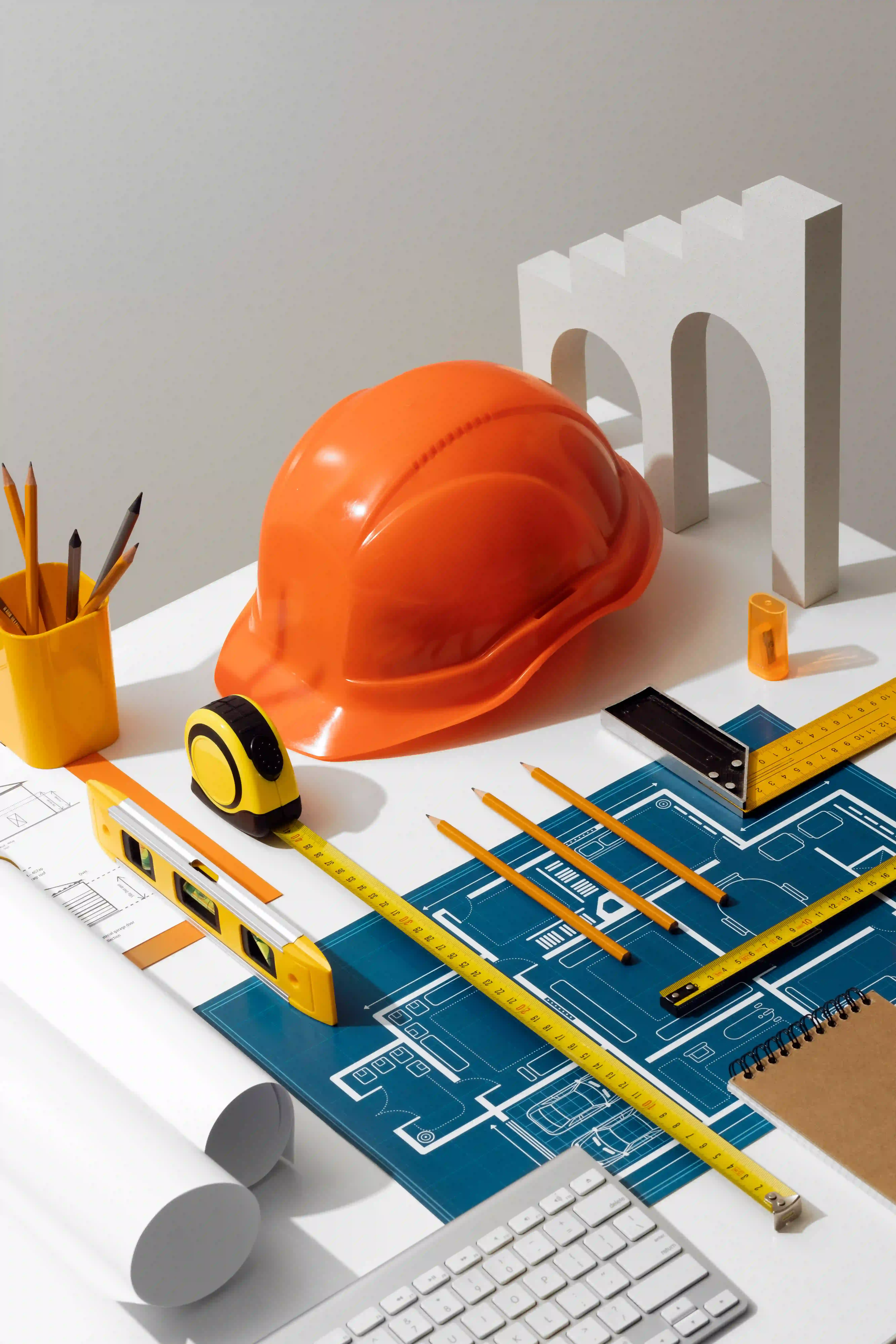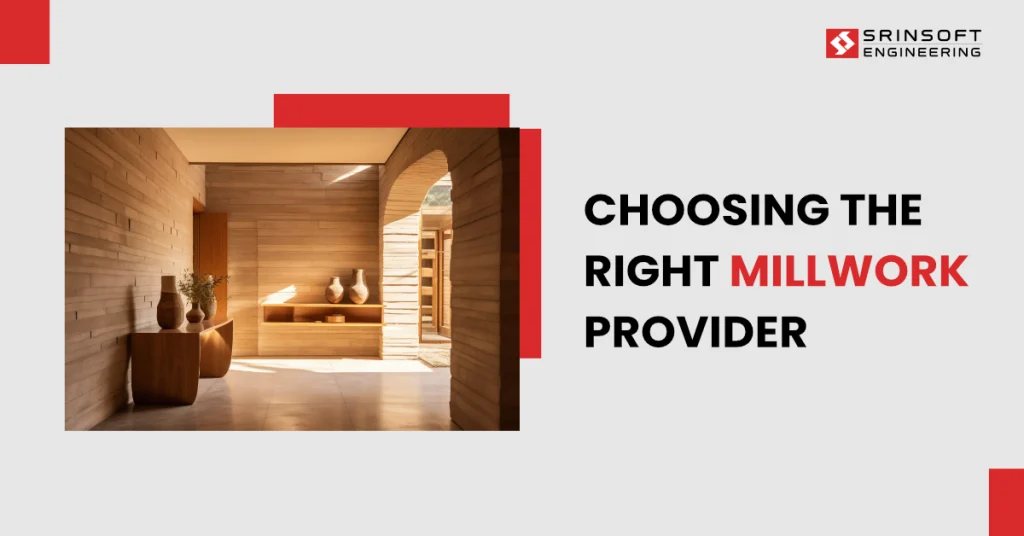
Architectural millwork is the art of crafting unique wood elements.
Architectural millwork designs refer to the custom-made woodwork elements such as doors, paneling, staircases & cabinetry that are integrated into a building’s architecture.
These elements are crafted with precision and artistry. It has the power to redefine spaces, infusing them with character and style.
What is Architectural Millwork
Architectural millwork involves the creation of diverse woodwork elements for use within and outside architectural endeavors, serving both functional and visual needs.
It can be tailored to specific requirements or produced in standard forms for mass distribution.
It’s a process in which the raw wood is converted to a product that finds utility in our daily lives. These shop drawings are used to guide the workers to make the design a reality.
Types of Millwork Commonly Specified by Architects Include:
- Casework
- Wall paneling
- Trim
- Countertops
- Staircases, and
- Decorative moldings for various building structures, such as columns and ceilings
Benefits of Millwork Design
The benefits of the millwork design are to categorize the millwork and the space utilization for the specific millwork.
Having an experienced professional to design the spaces with the unique and client’s requirements can be filled.
1. Aesthetic Appeal
Millworks add life to space. The millwork elements play a significant role in enhancing the aesthetic appeal of a space.
2. Experienced Professional
One of the most significant benefits of incorporating millwork into the design is that we are guaranteed to receive quality craftsmanship.
Working with experienced professionals proves the custom architectural millwork will be expertly crafted and installed. Professional millwork standards guide each step of the process.
3. Creates a Unique Spaces
One of the main reasons that the designers choose custom architectural millwork is to express the individuality and creativity of their designs.
Millwork elements are chosen to fit the spaces with the functionality. The well-designed millwork can add value to a place, making it more appealing to the client.
Customization and Personalization
Millwork can be customized to fit any style or design preference. It allows designers and manufacturers to create unique designs of their style.
Customization brings an endless possibility, be it finding quality materials to convert the imagination into reality.
Customization provides the product durability, where the quality materials will be chosen and utilized in the millwork.
The configuration of the millwork will be specifically adapted to accommodate the space, which will in turn minimize the need for subsequent modifications.
If the standard-size product does not fit in the space, custom millwork services provide a solution to customize the product to give an aesthetic look to the space.
If a client desires a specific design, it is occasionally possible to create a customized design. This customized feature can be included in the millwork components.
Millwork in Different Types of Spaces
Here are some of the descriptions of the millwork used in different spaces:
1. Casework
Casework refers to the manufacturing of boxed furniture such as cabinets, racks, drawers, bookcases & storage spaces. Casework is typically not custom-made and finds applications in modular usage. It includes every storage cupboard, pantry furniture & drawer.
2. Wall Paneling
Wall paneling is a type of interior design that adds a stylish & textured look to any space while concealing wall imperfections. It provides an aesthetic charm to a room. The finished panel will be attached to the wall with respective hardware.
3. Trim
A trim is a wooden piece that runs around the window or doors. In some architectural designs, it may be used in various places. The inclusion of trim enhances the aesthetic appeal of the design.
4. Countertop
A countertop is a flat working surface, finished with different materials, built for work in kitchens or other food preparation areas, bathrooms, and workrooms. The countertop is frequently installed upon and often supported with support bracket hardware, base cabinets, and equipment based on the design indent.
5. Crown Moulding
Crown moulding is used between the walls and ceiling with the decorative profile. It is recognized for its curves and distinctive angles. This type of moulding sits at an angle between the wall and ceiling, which gives a good look to the space.
6. Doors
A door is a hinged or movable barrier that allows entry & exit from an enclosure. Doors are generally made of a material suited to the door’s task and are commonly attached by hinges.
Explore: How Millwork Drafting Enhances Your Furniture Design?
The Role of Technology in Millwork Design
Technology is important in millwork design, offering new tools and techniques to transform the industry. Here are some of the technologies that play a vital role in millwork design,
1. Computer-Aided Design (CAD)
CAD software allows for precise and detailed representation of millwork elements. This is used to generate accurate measurements, intricate designs, and detailed reports. This software has both 2D and 3D drawings for easy understanding of the millwork elements or profile.
2. CNC Machines
Computer Numerical Control (CNC) machines have revolutionized millwork design by providing accurate and efficient cutting, carving, and milling. They can execute complex designs that would be challenging and time-consuming to do manually.
3. 3D Modeling
3D modeling provides highly detailed and realistic representations of millwork elements, which enhances design accuracy.
Conclusion
In conclusion, choosing the right millwork provider for architectural millwork design is much more than a mere decorative decision.
It is a transformative tool that breathes life into spaces, making them more functional, personalized & aesthetically pleasing.
Frequently Asked Questions
1. Can millwork fit with modern design trends?
Absolutely! Millwork is super versatile and can be tailored to any design style, from classic to contemporary. Our experts can help you blend the latest trends with your existing décor seamlessly.
2. What materials are used in millwork design?
We use a variety of woods like oak, maple, cherry, and walnut, along with engineered woods and veneers. We can even incorporate metal and glass for unique, durable pieces.
3. How do I start a millwork design project?
Start by booking a call with our millwork experts. We’ll chat about your vision, check out your space, and create a custom design plan that fits your needs.
Ready to Transform Your Space with Custom Millwork?
Book a call with our experts today and let’s start planning your unique millwork project!


